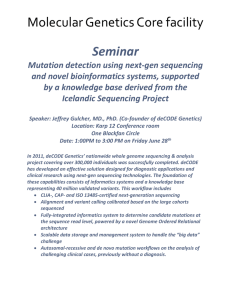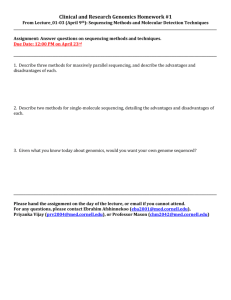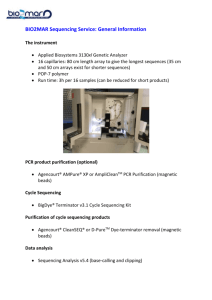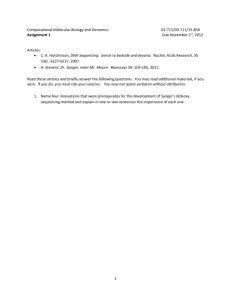Last Update: 07/05/2013 Sequencing Workshop
advertisement
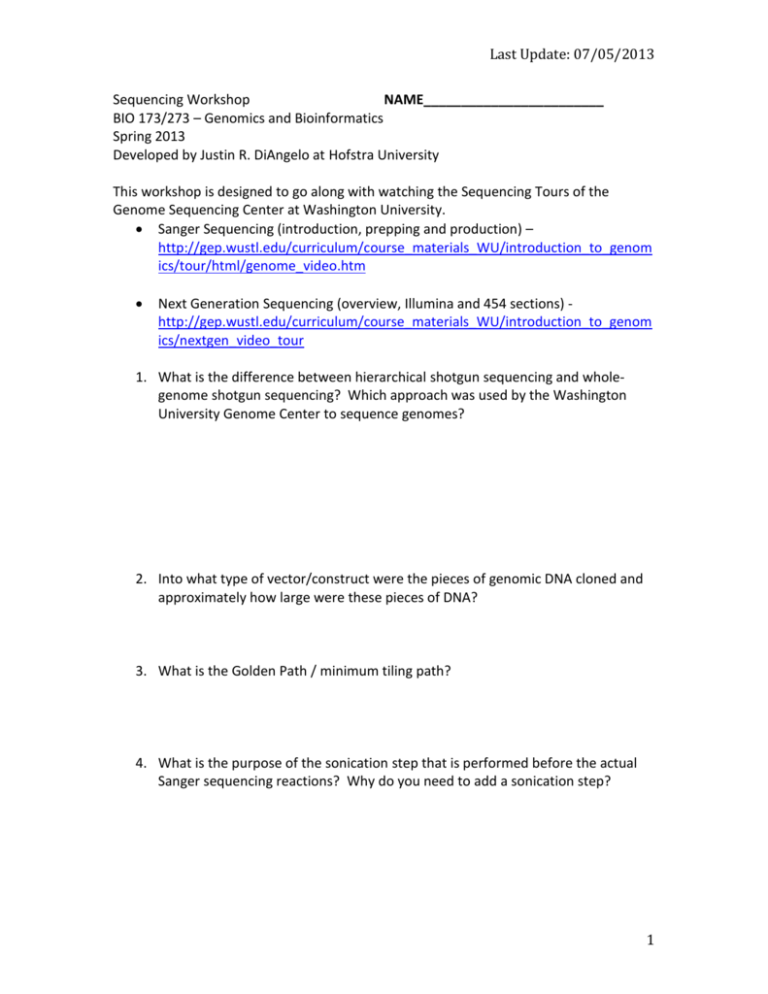
Last Update: 07/05/2013 Sequencing Workshop NAME________________________ BIO 173/273 – Genomics and Bioinformatics Spring 2013 Developed by Justin R. DiAngelo at Hofstra University This workshop is designed to go along with watching the Sequencing Tours of the Genome Sequencing Center at Washington University. Sanger Sequencing (introduction, prepping and production) – http://gep.wustl.edu/curriculum/course_materials_WU/introduction_to_genom ics/tour/html/genome_video.htm Next Generation Sequencing (overview, Illumina and 454 sections) http://gep.wustl.edu/curriculum/course_materials_WU/introduction_to_genom ics/nextgen_video_tour 1. What is the difference between hierarchical shotgun sequencing and wholegenome shotgun sequencing? Which approach was used by the Washington University Genome Center to sequence genomes? 2. Into what type of vector/construct were the pieces of genomic DNA cloned and approximately how large were these pieces of DNA? 3. What is the Golden Path / minimum tiling path? 4. What is the purpose of the sonication step that is performed before the actual Sanger sequencing reactions? Why do you need to add a sonication step? 1 Last Update: 07/05/2013 5. List the major molecules needed in a standard Sanger sequencing reaction. 6. During Sanger sequencing, how do you get fragments of different sizes? 7. How is the DNA fragments ordered by size? 8. How does the sequencing machine detect the bases? 9. What do finishers do? 10. What do we mean by “genome coverage”? 11. What are the main differences between Sanger and next generation sequencing? 2 Last Update: 07/05/2013 12. How do run times and read lengths differ between Sanger and next generation sequencing? 13. The following questions concern Illumina Next Gen sequencing: a. Explain what is happening on the flow cell in the Cluster Generator. b. Why does amplification of input DNA occur in “clusters”? Are all of the clusters the same? c. Describe the actual sequencing process in the Illumina sequencer. What part of this process is similar to Sanger sequencing? d. What is the maximum read length using the Illumina technology? 3 Last Update: 07/05/2013 14. The following questions concern 454 pyrosequencing: a. What is the advantage of performing emulsion PCR? What is included in each emulsion droplet? b. What is pyrosequencing and how does it lead to detection of a given base by the sequencer? c. What is the maximum read length of the 454 sequencers? d. What is a major issue/problem one runs into using 454 sequencers? 15. Name one reason why you would use Illumina over 454 and one reason why you would use 454 over Illumina. 4

